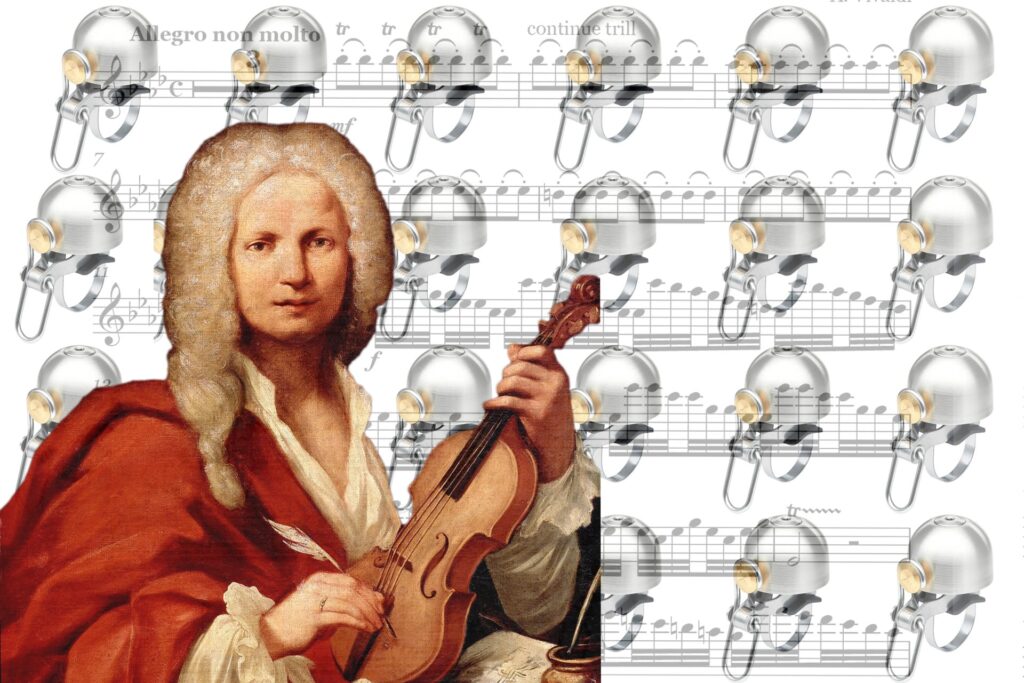
In a remarkable fusion of classical music and community spirit, 927 cyclists in the Polish town of Jarocin gathered to perform Antonio Vivaldi’s “Winter” from The Four Seasons using nothing but bicycle bells. This unique event took place on World Bicycle Day, adding a whimsical twist to the celebration of both cycling and music.
Antonio Vivaldi’s The Four Seasons, composed in the early 1700s, remains one of the most recognizable pieces in classical music. Its depiction of the changing seasons through stirring violin concerti has inspired countless reinterpretations over the centuries. However, the rendition by Jarocin’s cycling community stands out for its creativity and community involvement.
The Musical Heritage of Jarocin
Jarocin is no stranger to musical innovation. The town has a rich history as a cultural hub, having hosted the Eastern Bloc’s defining alternative music festival during the Cold War. This legacy continues today, with the Polish Rock Museum calling Jarocin home. Against this backdrop, the bicycle bell performance of Vivaldi’s “Winter” adds a new chapter to the town’s storied musical history.
While the performance may not have been a note-perfect rendition, it was a testament to the joy of communal participation. The cyclists, each equipped with a bicycle bell, attempted to mimic the frenetic energy of Vivaldi’s composition. The result was a charming cacophony, with the backing track of an orchestra providing the necessary melodic structure.
The Art of Bicycle Bell Music
Performing Vivaldi on bicycle bells presents unique challenges. Most bells lack tuneability, offering a single, unchangeable note. This limitation meant that the cyclists’ performance relied heavily on the orchestral backing to carry Vivaldi’s intricate melodies. Despite this, some bell tones managed to rise above the orchestral sound, adding a layer of whimsy to the performance.
Reflecting on the event, one might wonder if a more refined performance could be achieved with bicycle bells. A personal experiment with a collection of 11 distinct bells revealed the difficulties of creating a cohesive musical piece. While some bells produced harmonious intervals, the lack of a full octave and the absence of tuning consistency posed significant challenges.
Exploring the Potential of Bicycle Bells
The experiment underscored the beauty and diversity of bicycle bells, crafted by artisans from around the world. From the piercing ping of a Spurcycle bell to the melodic tones of a Knog Oi Classic, each bell offered a unique sound. However, the experiment also highlighted the limitations of using bicycle bells for complex musical compositions.
“A bicycle bell is designed to make a bicycle bell noise, not be chromatically faithful to other bicycle bells, or, for that matter, a long-dead Italian composer’s masterpiece.”
The Joy of Community and Music
Ultimately, the Jarocin performance was less about musical perfection and more about the joy of community engagement. The sight of nearly a thousand cyclists ringing their bells in unison, celebrating both music and cycling, was a heartwarming spectacle. It served as a reminder of the power of music to bring people together, even in the most unconventional ways.
For the people of Jarocin, this event was a celebration of their town’s musical heritage and a testament to their creativity. It also highlighted the enduring legacy of Antonio Vivaldi, whose compositions continue to inspire and delight, even centuries after they were first penned.
As the echoes of bicycle bells faded, the event left a lasting impression, making the world a slightly more charming place, if only for a brief moment.







